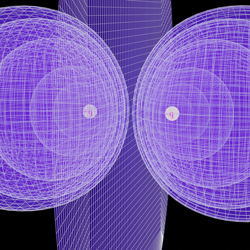Modern Approaches to Chiral Sensing: electric dipole revolution and beyond
 We are pleased to announce a call for papers for a special issue on “Modern Approaches to Chiral Sensing: electric dipole revolution and beyond.”
We are pleased to announce a call for papers for a special issue on “Modern Approaches to Chiral Sensing: electric dipole revolution and beyond.”
Modern chiral sensing requires combination of high accuracy and speed. Optical methods outpace equilibrium-based techniques such as chromatography in their speed and can probe chiral media “in situ”. However, since the early 19th century, chiroptical methods were thought to require inefficient interactions with the magnetic field component of light. Consequently, non-equilibrium phenomena responsible for enantio-sensitive charge and energy flow in molecules, including internal energy conversion, chiral electronic and vibronic currents, chiral photodynamics remained largely unexplored, in contrast to non-chiral observables in molecules, through which developing methodologies for time-resolving these dynamics were awarded the 1999, 2018 and the recent 2023 Nobel Prize in Physics.
The issue aims to highlight a transformative shift in chiral measurements, known as the electric dipole revolution — the emergence of methods exploiting non-equilibrium electronic, vibronic, or rotational dynamics of a chiral molecule or photoionization, using X-rays, optical or microwave fields, while detecting photons or photoelectrons. In these methods the chiral response no longer hinges on inherently weak magnetic interactions, but rather emerges already in the electric-dipole approximation, and promises orders-of-magnitude increase in coupling strength, enabling in particular chiroptical measurements on isolated low density gas phase species, which were very challenging in the past.
Electric dipole nature of chiral measurements also implies that chiral interactions can be defined locally, which may seem counterintuitive, since chirality is a geometric property of an extended object, defined by mutual orientations of its parts. The appeal to non-equilibrium dynamics solves the apparent controversy: temporal evolution of any local vectorial observable such as current or polarization can substitute the missing spatial dimensions such as the pitch of circularly polarized light, absent in the electric dipole approximation. This special themed collection aims to provide a platform to showcase the emergent concepts such as local or temporal chirality and associated geometric properties of chiral non-equilibrium dynamics in molecules, including chiral electronic currents and chirality-spin coupling in non-equilibrium phenomena.
The issue welcomes contributions on control and manipulation of chiral molecules using locally chiral interactions. Locally chiral interactions bring new opportunities for separating enantiomers, enantio-sensitive population transfer in rotational, vibrational or electronic states of chiral molecules.
Besides, the electric dipole revolution introduces efficient, high-speed methods achieving sub-percent accuracy in detecting enantiomeric excesses. This issue aims to explore the synergies between such methods and practical applications such as breath detection or high-precision chiral mass spectrometry.
On a broader point of view, this issue aims to explore the latest advancements and methodologies in the field of chiral sensing and quantification, emphasizing cutting-edge techniques and theoretical approaches that leverage ultrafast processes and structured light.
We invite researchers to submit original research articles, review papers, and perspectives on the covered topics.
Topics covered include, but are not limited to:
- Chiral sensing with structured light
- Ultrafast chiral currents
- Ultrafast chirality changes probed at XFELs or via HHG
- Chiral photoelectron spectroscopy: from static to sub-fs timescales PECD
- Chiral non-linear optics
- Chirality and spin selectivity
- Topology in chiral media
- Chiral molecular rotations
- Chiral optical forces and enantio-separation
- Analytical developments of chiral sensing coupled to mass spectrometric approaches: applications to breath detection
- Chiral biomarkers
- Electric-dipole approaches in high resolution MW spectroscopy and parity violation detection
Guest Editors:
Olga Smirnova (Technische Universität Berlin, Max-Born Institute Berlin, Technion Haifa)
Laurent Nahon (Synchrotron SOLEIL, St Aubin, France)
Structural Dynamics Editor:
Toshinori Suzuki (Kyoto University)
How to Submit:
- Please submit through the journal’s online submission system. You may need to create an account if you do not already have one.
- During the submission process you will be asked if your manuscript is part of a special topic. Please answer “Yes” and select “Modern Approaches to Chiral Sensing: electric dipole revolution and beyond” from the subsequent drop-down menu.
